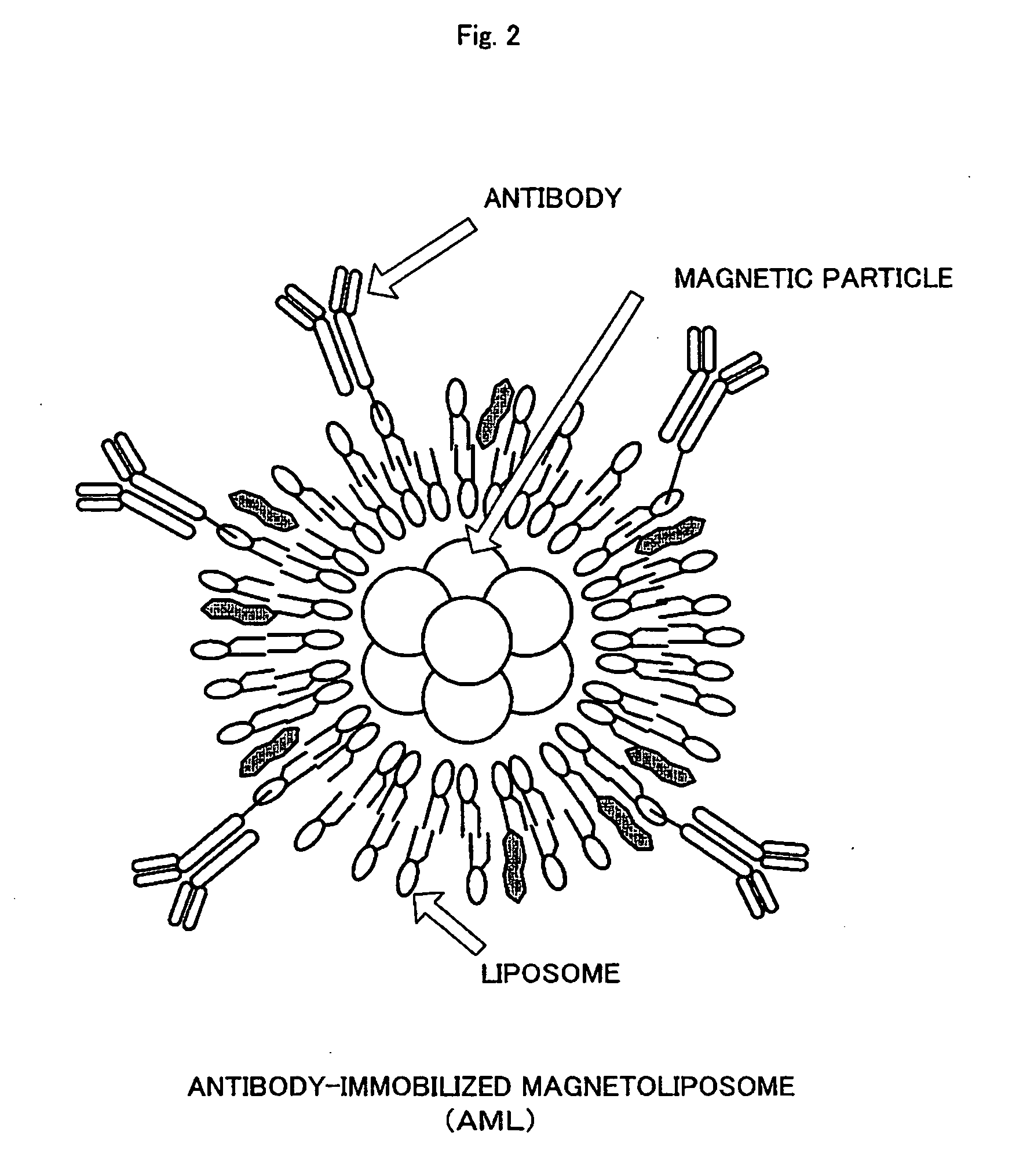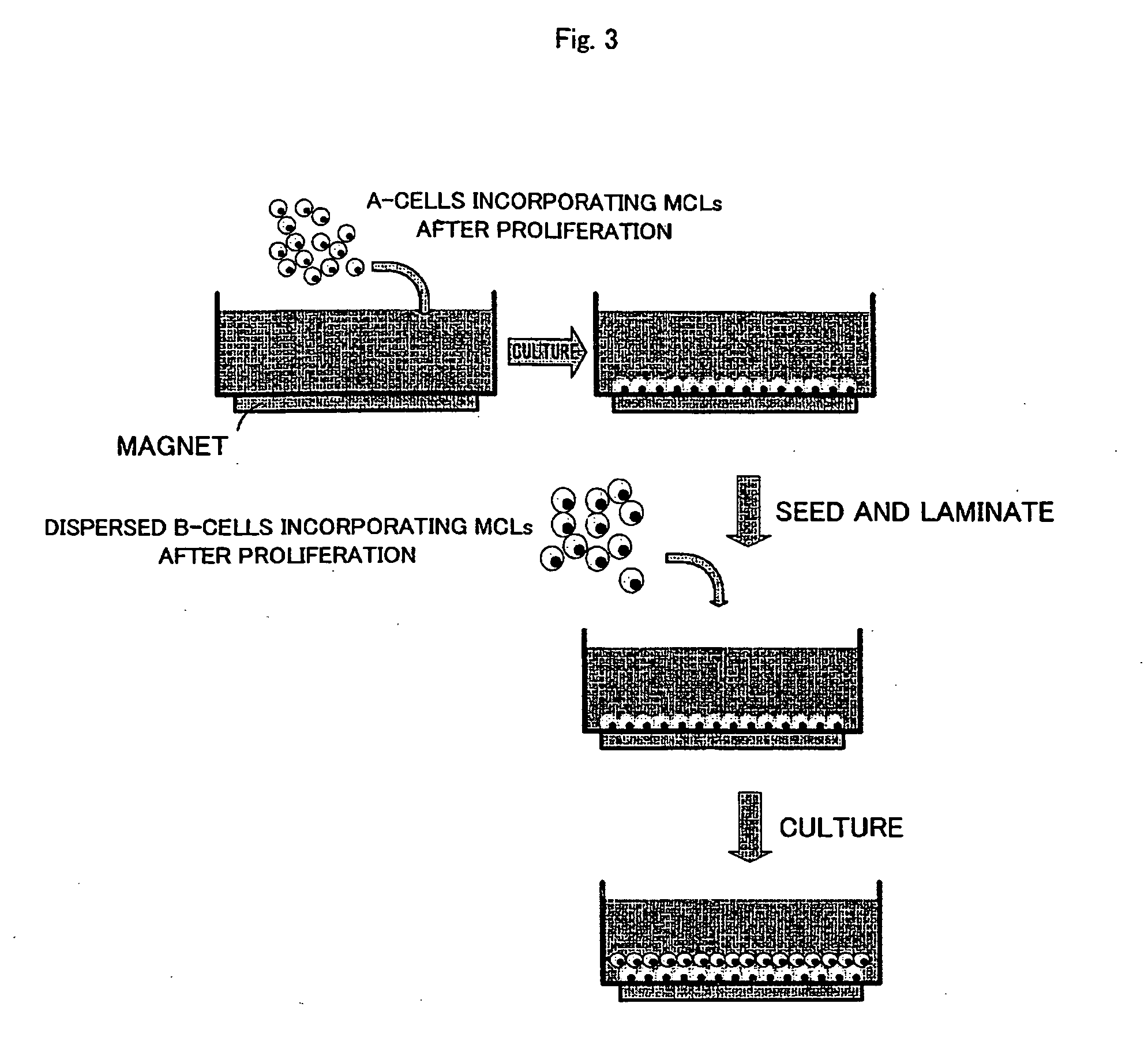Cell culture method and cultured tissue
a cell culture method and cell technology, applied in the field of cell culture methods and cultured tissue, can solve the problems of difficult to handle monolayer cell sheets, difficult to recover cell sheets, and complicated procedures
- Summary
- Abstract
- Description
- Claims
- Application Information
AI Technical Summary
Benefits of technology
Problems solved by technology
Method used
Image
Examples
example 1
[0056] Hereinafter, the present invention will be specifically described by way of Examples. However, it is not intended that the present invention is limited to these Examples. In the following Example 1, a case in which cultured liver tissue was constructed by using parencymal hepatocytes and vascular endothelial cells will be described. FIG. 6 schematically shows this Example.
(1) Harvest of Rat Parencymal Hepatocytes
[0057] Rat parencymal hepatocytes were harvested from 7-9 week-old Sprague-Dawley rat by an in situ collagenase perfusion method. The collagenase perfusion method is generally described in Toshikazu Nakamura, Experimental Method for Primary Culture of Liver, Center for Academic Publications Japan, 1987; 5-17 and Seglen PO. Preparation of isolated rat liver cells, Meth. Cell. Biol 1976; 13: 29-83. In this Example, rat parencymal hepatocytes were harvested by the following method.
(Collagenase Perfusion Method)
[0058] The procedure of the method firstly anesthetized...
example 2
[0077] In the below-mentioned Example 2, a case in which cultured vascular tissue was constructed by using fibroblasts, vascular smooth muscle cells and vascular endothelial cells will be described. This Example constructed vascular tissue by using vascular endothelial cells as first cells, vascular smooth muscle cells as second cells, and fibroblasts as third cells. FIG. 10 schematically shows this Example.
(1) Vascular Endothelial Cell
[0078] As vascular endothelial cells, human aortic endothelial cells (HAECs, Sanko Junyaku) were used. Second to fourth passage of subcultured cells were used. The cells were subcultured when they were 80% confluent. A quarter of the cells were seeded. For a medium, a medium for vascular endothelial cells (EGM-2, Sanko Junyaku) containing 0.04% hydrocortisone, 0.4% hFGF-B, 0.1% VEGF, 0.1% R3-IGF-1, 0.1% ascorbic acid, 0.1% heparin, 2% FBS, 0.1% hEGF, and 0.1% gentamicin / amphotericin was used.
(2) Vascular Smooth Muscle Cells
[0079] As vascular smo...
PUM
 Login to View More
Login to View More Abstract
Description
Claims
Application Information
 Login to View More
Login to View More - R&D
- Intellectual Property
- Life Sciences
- Materials
- Tech Scout
- Unparalleled Data Quality
- Higher Quality Content
- 60% Fewer Hallucinations
Browse by: Latest US Patents, China's latest patents, Technical Efficacy Thesaurus, Application Domain, Technology Topic, Popular Technical Reports.
© 2025 PatSnap. All rights reserved.Legal|Privacy policy|Modern Slavery Act Transparency Statement|Sitemap|About US| Contact US: help@patsnap.com



